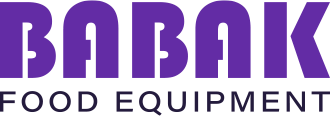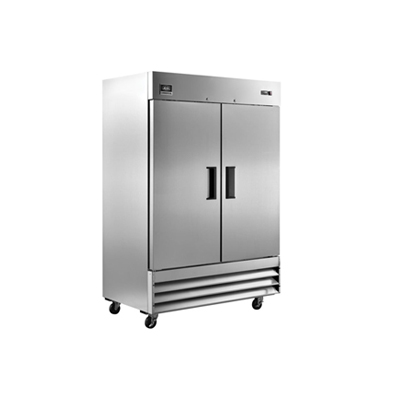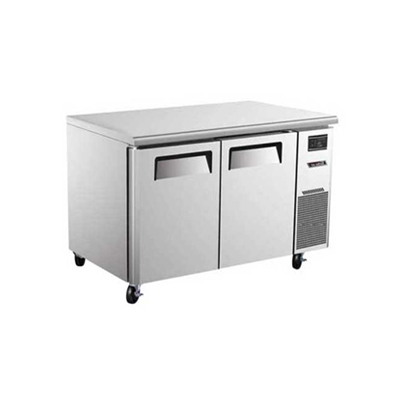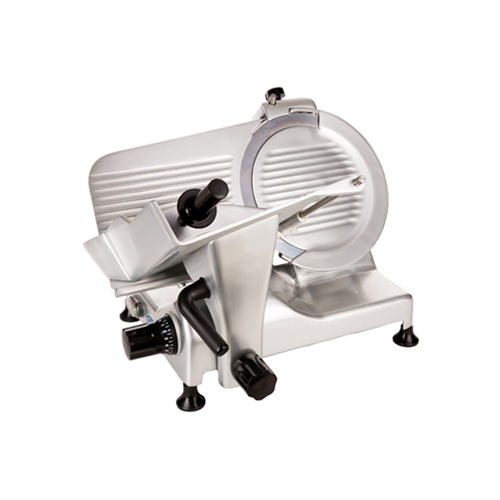3 Ways To Improve Workflow in Your Commercial Kitchen
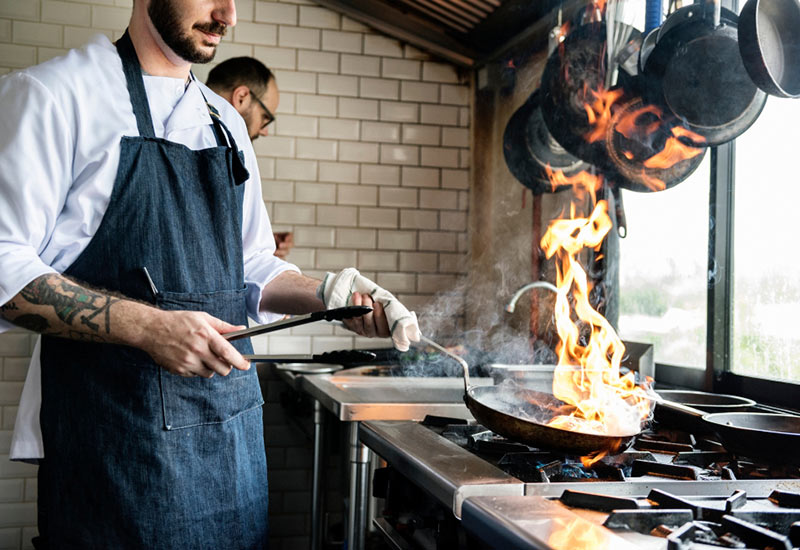
Improving workflow in your commercial kitchen will improve the overall experience of your staff and your guests while saving you money.
There are 3 initiatives you can begin tackling today to establish an efficient workflow in your commercial kitchen:
- Kitchen layout
- Procedures
- Ask your team
1. Kitchen Layout
Kitchen layout is of utmost importance and is the foundation for optimizing your team’s workflow. Establishing an organized, logical flow will provide a safe working environment, reduce bill times, and will minimize frustration amongst your team.
Your commercial kitchen layout will primarily consist of areas and stations for storing inventory, food preparation, cooking, service, and dishwashing.
Storage
A well-organized storage area for dry goods, fresh produce, meats, dairy, and beverages will ensure proper inventory rotation and clear visibility of what needs to be ordered next. You’re saving time during inventory counts, and you’re saving money by avoiding excess quantities making it onto your order sheet.
Your dry storage unit will benefit from heavy-duty racks and stainless steel shelving. These are made for storing all of your ingredients that aren’t temperature-sensitive, and even your smallware. Epoxy coated wire shelves are a great addition to your refrigeration and freezing units, so you don’t have to worry about rust buildup.
Food Preparation
Always dedicate an area exclusively for food preparation. Consider the appropriate space and proximity that will allow your cooks to execute under high pressure and time constraints. Many cooks would agree that a lack of adequate workspace is one of the most frustrating aspects when it comes to the food prep process.
Ensure your team has the work tables, bun pan racks, and compartment sinks where they need. Your team will frequently visit their storage areas to grab all essential ingredients. Design your prep area close to these storage units to reduce the time spent on gathering all of the essentials.
Cooking
The cooking station is the heart of your operations. In the name of multi-tasking, it is common for many kitchens to utilize this area for knocking off their preparation duties. While many Chefs have the knack for getting the job done, the process can be much more efficient and help you save money overtime when both areas are kept separate and clutter free.
Consider this: your griddle and ranges are operating at full capacity; potatoes are cooking, stocks and sauces are simmering, and you’re sautéing up a storm.
That’s one hot station.
Preparing temperature sensitive ingredients close by to all of this action means you are compromising the quality of your product and increasing the risk of spoilage, making it unsafe for guests to consume. You’ve either wasted product or made a guest sick. Both options are not okay and will cost you money and ruin your restaurant’s reputation!
When finalizing the layout of this station, take in consideration that particular pieces of commercial kitchen equipment should be kept at a distance from other equipment. Any units that are solely created for refrigeration should be kept at a reasonable distance from these heating elements – you risk damaging your equipment otherwise.
Service
This is where your front-of-house staff will pick up completed dishes to bring to their guests. This is also the area where clean dishes and cutlery will likely be stored. This area needs to be organized and must not intersect with the other areas of the kitchen. Ensure you have the proper racks and shelving required to store the plates you have, and set up designated refrigeration and cooling units that are used only for beverages and garnishes.
Dishwashing
The dishwashing area is the final area to consider. Ensure this station is fully set up with a quality upright dishwasher, scrubbies, rinse, sanitization solutions, and detergents that have the capacity to keep up with your busy operations. You want this area as distanced as you can from the other 4 areas of your kitchen, not only for health and safety reasons, but also to give your dishwashers the space they need to get through the busy demands of the day with speed and ease.
2. Procedures
Once your carefully designed and fully equipped kitchen is ready, it is time to implement procedures that will help streamline your back-of-house process. We know cooks oftentimes struggle to keep up with mundane procedures throughout the twists and turns that occur during a busy day, but it is absolutely necessary to enforce.
When we say procedures, we’re talking the basics; label your inventory, update waste sheets, develop and use opening and closing checklists. This is where you want all essential supplies readily available to your team.
Ensure each station has a roll of labels that keep up with food safety standards (this means you’ll no longer be using masking tape to label your cambros. Sorry!), keep checklists accessible in all areas for your team to determine what needs to be prepared, what needs to be ordered, and thermometers for keeping up with hot holding temperature logs.
Enforcement of these procedures will ensure precise management of inventory levels and costs, and more focus on delivering quality service day in and day out.
3. Ask Your Team
Your team is there each day dedicating all of their efforts into making your restaurant, cafeteria, food truck, hotel, or supermarket a success. They are the driving force behind your operations, and their voice matters.
Open communication amongst staff and management is essential in not only improving workflow, but business in general. Ask your cooks and servers what they need and how they think the efficiency of their tasks can be improved. You’ll not only improve business but improve your team’s experience at work. This can be achieved in a variety of ways; hold weekly meetings, set up a communication board, or simply ask each member of your team privately.
Start Improving Workflow Today!
Don’t underestimate the power of a well-crafted kitchen layout in combination with the appropriate procedures enforced. Optimizing workflow improves your staff’s experience at work, your guests’ tasty experiences, and helps maximize profits.
For 20 years, Babak Food Equipment has been specializing in providing commercial kitchens across Canada with the restaurant equipment and supply required to improve workflow in their units. Babak has the technology and a team of trained professionals that can custom design and build equipment suited to your exact requirements. Give us a call and let’s optimize your kitchen for success.
